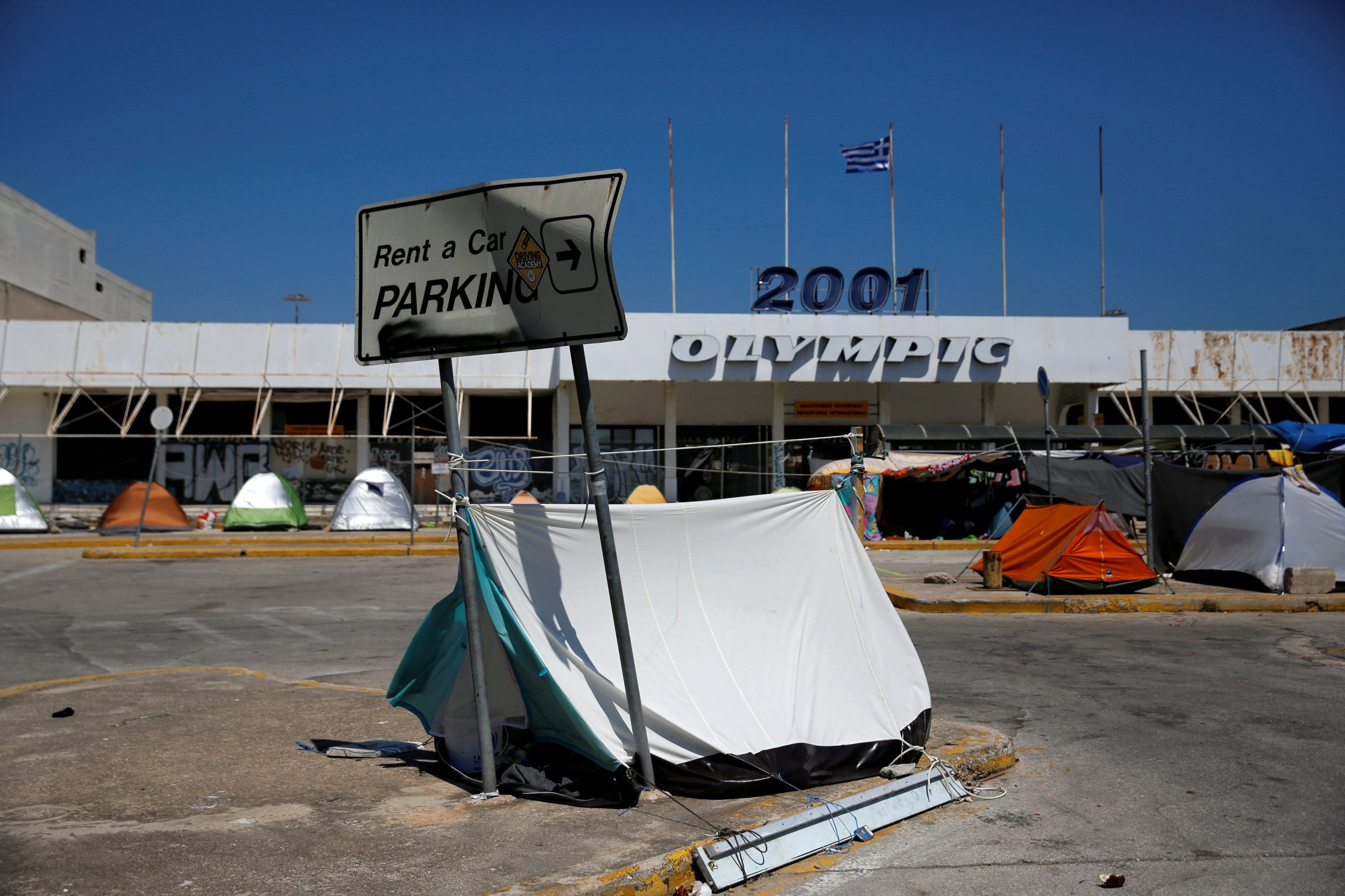
More than a million refugees and migrants applied for asylum in Europe in 2015, a record number that is a 122 percent increase versus the previous year, according to a new study from the Pew Research Center.
The European Union, Norway and Switzerland received 1.3 million asylum applications last year, with around half of all applicants originating from three countries: Syria, Afghanistan and Iraq. The number of asylum applications in 2015 is the highest since 1985 and nearly double the previous peak years of 1992—after the fall of the Berlin Wall—and 2002, which saw the aftermath of the Kosovo conflicts. The number of asylum seekers who filed applications in Europe last year is larger than the two previous peak years combined.
Germany received the largest number of asylum applications in Europe last year, an "unprecedented" 442,000, according to the report. Hungary and Sweden followed, with 174,000 and 156,000 applications respectively. Together, those three countries received more than half of all European applications in 2015. France, at 71,000 applications, and the U.K., at 39,000, received roughly the same amount of asylum applications as in previous years and are no longer considered leading asylum-seeker destinations, according to Pew.
"The intensity of 2015's sudden migration of asylum seekers was felt more acutely in some European countries than in others," according to the report. Hungary had the largest number of first-time asylum applications, with 1,770 applications per 100,000 people in its population, according to the report. The U.K. had the lowest number, with 60 applications per 100,000 people. The European average was 250 per 100,000 people, according to the report.
Asylum seekers from Eastern European countries such as Kosovo, Albania and Ukraine made up nearly one-fifth of asylum seekers in the E.U., Norway and Switzerland last year, said Pew. Syrians made up 29 percent of Europe's asylum seekers in 2015, although only one out of every 10 displaced Syrians around the world lives in Europe. The majority of displaced Syrians live in neighboring countries, including Lebanon and Turkey, or are displaced inside Syria.
This most recent Pew study, published on Tuesday, comes several weeks after another report from the organization that looked at the attitudes in 10 European countries toward refugees and terrorism. More than half of all respondents in the U.K., France, Italy, Spain, Germany, the Netherlands, Poland, Hungary, Sweden and Greece said they believe the likelihood of terrorism has increased in their country because of refugee resettlement. In the U.S., immigration and refugee resettlement is a highly politicized issue during the current presidential election.
While many refugees and migrants continue to make the treacherous journey from Turkey, across the Mediterranean Sea to Greece and onto areas of Europe, the movement of refugees and migrants has been shifting to the southern Mediterranean route to Italy since the E.U. struck a deal with Turkey to halt the flow of refugees. That agreement has resulted in an increase in sub-Saharan African migrants claiming asylum in Europe, according to the study. However, Ukraine, Iraq and Afghanistan saw the largest percentage increases in asylum applications last year.
The "uneven dispersion" of refugees across Europe is highlighted in the most popular asylum-seeker corridors, outlined by Pew in its report. The leading corridor of migration runs between Syria and Germany, with 159,000 asylum seekers from Syria filing applications in the country last year. Hungary, Sweden, Austria and the Netherlands were the other countries in which Syrians were most likely to file applications. Afghans were most likely to seek asylum in Hungary, while Iraqis were most likely to do so in Germany, Finland and Sweden.
The study also noted that the demographics of asylum seekers tended to skew toward young and male. In 2015, 73 percent of asylum seekers were male and 83 percent were under 35. "The large proportion of young males and comparatively smaller shares of young adult women and female children suggests that many refugees from these source countries are young men traveling alone," according to the report.
The number of unaccompanied minors—defined as children under 18 who arrived in Europe without adult guardians—traveling to Europe also increased in 2015, to a total of 7 percent of all asylum seekers. Between 2008 and 2015, boys aged 14 to 17 made up as much as 80 percent of the unaccompanied asylum seeker cohort. Sweden is "the leading destination" for unaccompanied minors, who are mainly teenage boys from Afghanistan, according to the report.
The Pew Research Center looked at data from Eurostat, the E.U.'s statistics agency, for the report. It includes data from the U.K., which currently remains part of the E.U. despite recently voting to leave the body.
Uncommon Knowledge
Newsweek is committed to challenging conventional wisdom and finding connections in the search for common ground.
Newsweek is committed to challenging conventional wisdom and finding connections in the search for common ground.
About the writer
Before joining Newsweek, Lucy Westcott was an editorial fellow at The Wire. Previously a United Nations correspondent for the Inter ... Read more
To read how Newsweek uses AI as a newsroom tool, Click here.






